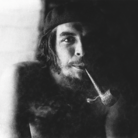Gino Rossi in Venice. Dialogue between the collections of Fondazione Cariverona and Ca' Pesaro

Gino Rossi, Barene a Burano, 1912-13, Oil on cardboard, Archivio Fotografico Fondazione Cariverona - Saccomani, Verona
From 23 Febbraio 2017 to 20 Maggio 2018
Venice
Place: Ca’ Pesaro - International Gallery of Modern Art
Address: Santa Croce 2076
Times: Daily 10 am - 5 pm | Last entrance 4 pm | Mon closed
Responsibles: Luca Massimo Barbero, Elisabetta Barisoni
Organizers:
- MUVE
Ticket price: Full 10 € | Reduced 7.50 €
Telefono per informazioni: +39 041 721127
E-Mail info: capesaro@fmcvenezia.it
Official site: http://capesaro.visitmuve.it
The sensational Ca’ Pesaro avant-garde seen through the eyes of one of its most cosmopolitan and innovative exponents, seventy years after his death. The Fondazione Musei Civici di Venezia, together with the Fondazione Cariverona, presents at Ca’ Pesaro a collection of the most interesting masterpieces by Gino Rossi (Venice, 1884 – Treviso, 1947), selected from the collections of both institutions and in dialogue with works by Rossi’s Ca’ Pesaro contemporaries, among them Felice Casorati, Umberto Boccioni, Arturo Martini and Pio Semeghini. The exhibition celebrates the brief and intense parabola of an artist who in just twenty years, from 1907 to 1926, was able to anticipate the Italian avant-gardes before tragically ending his days in the Sant’Artemio asylum in Treviso. In Paris, where he went in 1907, Rossi breathed the atmosphere of the European artistic movements of the period and encountered the ideas of Gauguin, the Fauves and Cubism. On his return to Venice, he joined the inner circle around Nino Barbantini, the new director of Ca’ Pesaro, who promoted the latest artistic currents in opposition to the academic approach pursued by the first editions of the Biennale. Rossi’s work was immediately distinctive for its powerful portraits of the unfortunate and marginalised, for its sublimation of colour in the dreamlike landscapes of the Venetian lagoon, and for its return to an original, almost archaic expressiveness. For Rossi, form was an ‘anti-graceful’ element and, as such, far removed from the affectation of so much early twentieth-century art and in open contrast with the decadent aesthetics of many of his contemporaries. These were the years when the island of Burano became his Brittany, an ideal place but absolutelynot idyllic, where he spent long periods of time and also moved to live, experiencing hardship and absolute discomfort. Among the portraits on display at Ca’ Pesaro is Bruto (1913), one of the best examples of Rossi’s attention to the poor and the marginalised, juxtaposed with the sculpture Buffone (1913-14) by Arturo Martini: a large painted plaster bust, which, in a game of aesthetic references, clearly illustrates the affinity between the two artists and the similarities in their research. However, Ritratto di signora (1914) and Maternità (1913), with their non-existent context and decoration, are in total contrast to Felice Casorati’s large canvas Le signorine (1912), which presents young daughters of the bourgeoisie in a place filled with symbols and references to their lifestyle and social status. Even Rossi’s landscapes, characterised by a powerful expressionism, are strongly influenced by his first stays in Brittany, as in Douarnenez (1912) and Paesaggio nordico (1911), which herald the beginning of a new form of vedutismo in landscape painting. Rossi was irreversibly affected by the experience of the First World War: his hospitalisation in an asylum marked the end of his artistic life, leaving a profound question mark about how he might have continued. The catalogue published byMarsilio contains texts by Luca Massimo Barbero,Elisabetta Barisoni and Nico Stringa, who has devoted a long and in-depth study to Gino Rossi.
SCARICA IL COMUNICATO IN PDF
COMMENTI

-
 Dal 27 marzo 2025 al 27 luglio 2025
Milano | Pirelli HangarBicocca
Dal 27 marzo 2025 al 27 luglio 2025
Milano | Pirelli HangarBicocca
-
 Dal 27 marzo 2025 al 30 giugno 2025
Bologna | Museo Civico Archeologico
Dal 27 marzo 2025 al 30 giugno 2025
Bologna | Museo Civico Archeologico
-
 Dal 27 marzo 2025 al 20 luglio 2025
Firenze | Villa Bardini
Dal 27 marzo 2025 al 20 luglio 2025
Firenze | Villa Bardini
-
 Dal 25 marzo 2025 al 24 agosto 2025
Brescia | Museo di Santa Giulia
Dal 25 marzo 2025 al 24 agosto 2025
Brescia | Museo di Santa Giulia
-
 Dal 22 marzo 2025 al 20 luglio 2025
Ferrara | Palazzo dei Diamanti
Dal 22 marzo 2025 al 20 luglio 2025
Ferrara | Palazzo dei Diamanti
-
 Dal 22 marzo 2025 al 08 giugno 2025
Venezia | Ca’ Pesaro – Galleria Internazionale d’Arte Moderna
Dal 22 marzo 2025 al 08 giugno 2025
Venezia | Ca’ Pesaro – Galleria Internazionale d’Arte Moderna


